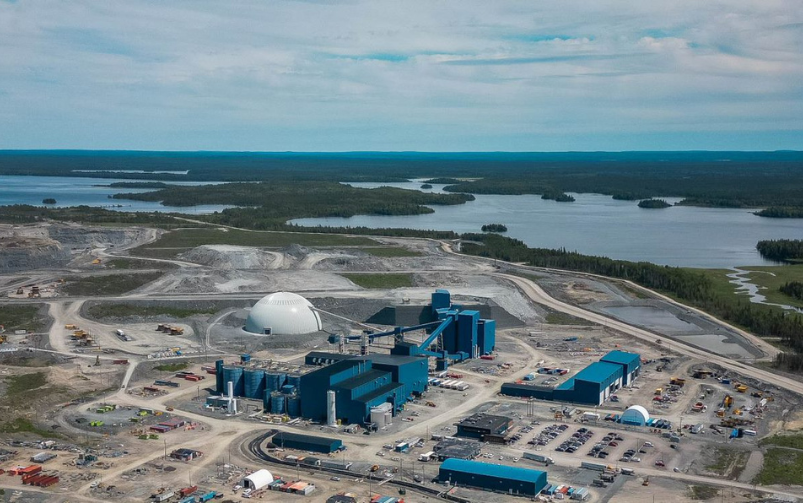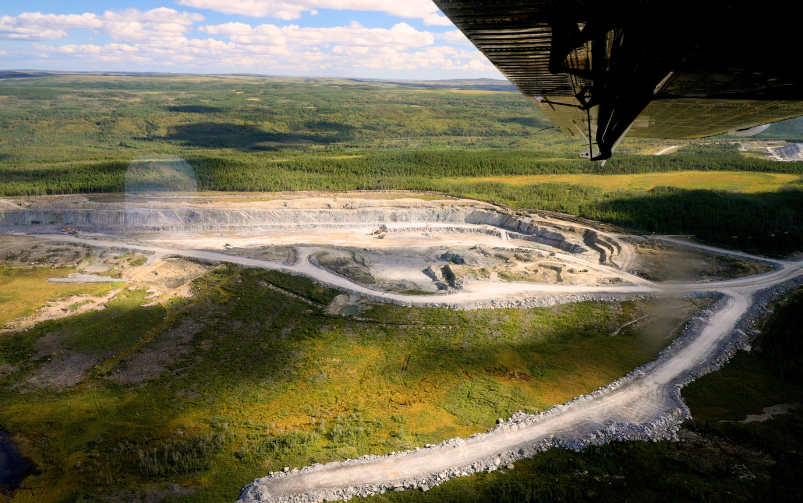Rio Tinto CEO Jakob Stausholm highlighted the need for sustainable metal production during the opening keynote at PDAC. Courtesy of PDAC via LinkedIn.
In the opening commodity outlook keynote on March 3 at the annual Prospectors and Developers Association of Canada (PDAC) 2024 conference in Toronto, Rio Tinto CEO Jakob Stausholm highlighted how the need to produce metals sustainably is becoming more critical as the world shifts towards renewable energy, which presents opportunities for mining companies as core markets grow and new trends emerge.
The theme of the keynote was “In a world in transition, metals matter,” and Stausholm noted that political, social, economic and energy transitions are all affecting the global mining industry. “We are seeing heightened international tensions and risks to global security… We are also seeing a greater influence from carbon in industrial policy, particularly around energy and supply chain security,” he said. “We are in economic transition—I am optimistic we are moving away from a period of high inflation, and I believe costs will stabilize this year, but the global economic outlook remains uncertain and commodity prices have been volatile.”
Stausholm highlighted that “decades of extraordinary globalization” have left the world with a serious dislocation between geology, processing, manufacturing and consumption, and many governments are now seeking to close this gap. “In the last two years, we have entered a new era of industrial policy characterized by government intervention, subsidies and policy support,” he said. “This is aimed towards de-risking supply chains and supporting the energy transition. It means industrial and climate policies are increasingly influencing commodity prices, premiums and project economics.”
Stausholm noted that to avoid supply bottlenecks, governments are also promoting the development of new mining and processing projects via financing and regulatory support. “This creates new growth opportunities for existing producers,” he said. “It also incentivizes competition that could result in risks such as trade barriers and resource nationalism as value chains adjust. Considering these trends, we anticipate robust growth in world demand for key commodities of around 3.7 per cent a year until 2035 in copper equivalent terms.”
He added that society’s expectations of how the mining industry will provide the materials needed for the renewable energy transition are evolving. “Decarbonization and the journey to net zero are a huge opportunity, but also a deeply physical and complex challenge,” he said. “We estimate [that] China’s renewable electrification and uptake of EVs will require four megatonnes in annual copper demand by 2035. As other countries work towards their own decarbonization goals, another 10 megatonnes of annual copper demand could be added.”
He pointed out that customers are increasingly expecting sustainable, traceable materials with security of supply. “They want us to help them decarbonize by providing low-carbon materials, and they want support in decarbonizing their own processes and reducing Scope 3 emissions,” he said.
Stausholm stated that Rio Tinto’s operations in North America are a prime example of how the company is positioning itself to capture these opportunities. For example, he pointed to the full transition to renewable diesel that the company achieved in 2023 at its mine in Boron, California, and its plans to fully transition the Kennecott mine in Utah to renewable diesel starting in 2024.
“We are heavily invested in Canada, which plays a significant role in our global portfolio of aluminum, iron ore and minerals,” said Stausholm. He added that Canada’s incredible wealth of hydropower makes it a world leader in low-carbon aluminum; last year, Rio Tinto invested $1.4 billion to expand its low-carbon AP60 aluminum smelting technology in Saguenay–Lac-Saint-Jean, Quebec. “Our hold of [AP60 technology] is an essential bridge to meet our customers’ demand for low-carbon materials,” said Stausholm.
The company is working with Alcoa, Canada’s federal government and the government of Quebec to develop its ELYSIS technology, which aims to move towards zero-carbon aluminum smelting, and Stausholm said there were significant steps planned for this year in its development towards commercial maturity.
Stausholm also cited the BlueSmelting technology that Rio Tinto is developing in Sorel-Tracy, Quebec, including a demonstration plant that started last year. “[BlueSmelting] could enable the production of titanium dioxide, steel and metal powders with a significantly lower carbon footprint,” he said. “Since then, we have demonstrated that BlueSmelting works on an industrial scale, and that we can achieve the quality levels we’re looking for. The next step will be to incorporate hydrogen in the process.”
Stausholm said that as the world’s biggest iron ore producer, Rio Tinto has a key role to play in decarbonizing the entire steel value chain, which he called an industry-wide and global challenge. “By scaling our capabilities, we can accelerate our progress,” he said.
Last week, Canada’s federal government awarded $18.1 million to Rio Tinto’s Iron Ore Company of Canada (IOC) to help decarbonize iron ore processing at its Labrador West operations. In Australia, Rio Tinto recently announced a partnership with BHP and BlueScope Steel for an electric smelting furnace pilot, and the company is also developing a low-carbon iron-making process called BioIron.
“I have no doubt that we can crack the code for green steel, [and] it will be the material that builds the future,” said Stausholm. “Still, it’s a huge challenge, and it will take years to progress the technology. We need to keep working in collaboration with our customers, peers and governments to accelerate low-carbon pathways.”
He said that working in partnership with governments and getting help, particularly in subsidies for research and development, is very important. However, he added, “what really matters is to have a country and a government [that] has an overall mindset towards the future we are looking into. I travel around, and it is not very often that I see the clarity of thought that I see here in Canada."
Stausholm told the audience that in his opinion, “there is not a single western country which is better placed than Canada [for decarbonizing the mining industry]. You are definitely a decade, if not more, ahead of the rest of the world because of your hydropower, [and] you will have a unique opportunity to electrify societies faster than other western countries. And we, Rio Tinto, would like to be part of that.”
Rio Tinto does not currently produce lithium, but last year the company signed agreements with other companies that own lithium properties in Canada. “Lithium is fascinating, and we are trying to build a lithium business,” Stausholm said, noting that Rio Tinto is following battery technology quite closely. “We have not gone into cobalt, not gone into nickel, but we have gone into lithium… because we believe that it is difficult to predict what batteries will win, but the likelihood is that the future will have lithium in it. Two thirds of the batteries produced in China are actually LFP [lithium ferrophosphate] batteries, so [they have] lithium but no nickel or cobalt.”
He added that it is clear that lithium is abundant, “therefore you’ve seen very volatile and sometimes very high prices, and now the prices have come down somewhat,” he said. “How do we make sure that we only get into resources of sufficient scale where we can build a real tier one business that is low cost? I would love to be a lithium producer in Canada, but it has to be the right resource.”
Stausholm concluded his keynote presentation by saying that while we do not yet have all the necessary technology and infrastructure to achieve net-zero emissions in the mining industry, partnerships can help in the acceleration of decarbonization pathways. “In this developing and opportunity-rich world, metals and the way we provide them to society really matters,” he said. "At Rio Tinto, we are absolutely convinced that Canada is a vital part of how we would drive the energy transition and create a low-carbon future together.”




